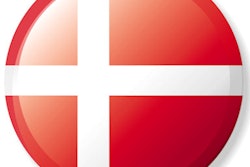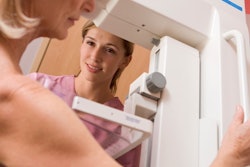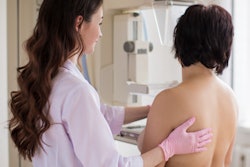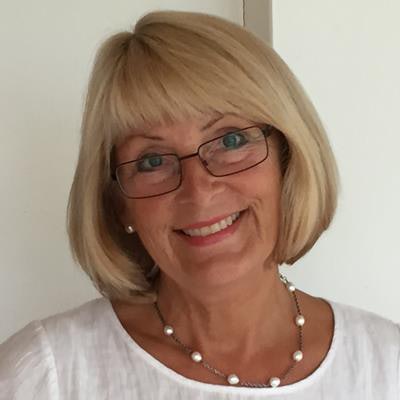
Multidisciplinary teamwork, high-volume readers, training and audits, and continuous monitoring of quality are vital in breast cancer screening, according to Dr. Ilse Vejborg, a speaker at Tuesday's RSNA 2018 session on the Nordic countries. Her group also works hard to avoid potential harms from overdiagnosis and unnecessary intervention.
Based in Copenhagen, Denmark, Vejborg is the chief physician and the head of radiology at Rigshospitalet and head of the city's mammography screening program. In this question-and-answer interview, she explains her philosophy and approach.
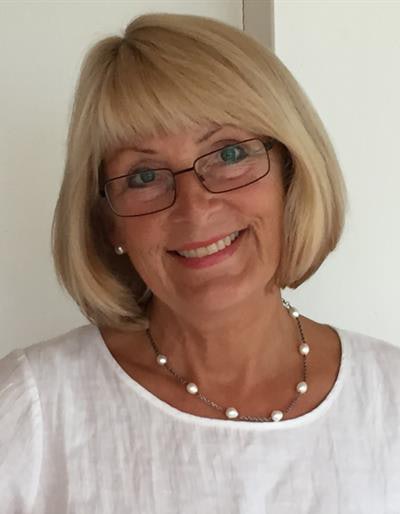 Dr. Ilse Vejborg from Copenhagen.
Dr. Ilse Vejborg from Copenhagen.You mention in your RSNA 2018 abstract about the need for critical thinking in the debate about the pros and cons of mammography screening. Has emotion rather than evidence driven the debate?
Vejborg: Yes, overall I believe that the debate has been very emotional. But what is more important is that when implementing screening on a healthy population, you should aim for a high quality in all levels, and you should know how to evaluate performance indicators, the benefits -- above all the impact on breast cancer mortality -- and the possible negative side effects, particularly the possibility of overdiagnosis. To do so, you must know all the women in the target group, and to evaluate the impact of screening, you should have individual data on which have been participating and the outcome of the screening.
You also say that unnecessary workup should be minimized. How can this be done?
You should keep the recall and false positive levels low. You should aim at gaining a definitive preoperative diagnosis and keep the diagnostic operations at as low a level as possible. In the two established screening programs in Denmark (Copenhagen and Fyn) and also in the National Mammography Screening Programme, which has been nationwide since 2010, we try to ensure a low level of recalls, a low level of false positives, and a very low level of diagnostic operations. The way to do that is by having highly specialized radiologists reading more than 5,000 examinations a year -- so-called high-volume readers -- as well as centralized assessments, continuous quality control also on the radiographic work, and close collaboration between multidisciplinary teams and skilled radiographers.
In Denmark, each of the five regions has a centralized screening program and a population-based invitation register. The double-blinded reading performed by at least one radiologist who reports over 5,000 examinations a year, and digital mammography equipment, PACS, and RIS are used.
Overdiagnosis is the main harm, you say. Can you elaborate here?
It is not possible on a woman's level to distinguish a potentially overdiagnosed cancer, but on a population level you can evaluate the potential overdiagnosis of cancers that would not have been detected in the woman's lifetime. To do so properly, you should be aware of the course of screening and of the expected and desired prevalence peak, the mechanism of "artificial aging," and the compensatory dip after screening has stopped. You need individual data on all women in the target group in order to evaluate whether or not they have participated in screening. Moreover, you should be able to follow the trend in incidence in the nonscreened population and compare with matched cohorts.
Because of the late national implementation of mammography screening in Denmark, we have been able to evaluate the 20% of the target population ages 50 to 69 years offered mammography screening in the two longstanding programs and to compare the data with the 80% nonscreened population. This has given us a unique possibility to evaluate both on the potential overdiagnosis -- taking into account the increasing breast cancer incidence in the whole population -- and also the possibility to evaluate the impact of screening on breast mortality.
We should keep the harms as low as possible. The false-positive women get unnecessarily worried and undergo unnecessary workup, but the most important negative side effect is, of course, the potential overdiagnosis. To my knowledge, worldwide we have not seen any breast cancers visible on mammography (i.e., those cancers that have grown for some years before they get visible) that have shown spontaneous complete remission.
What are your specific ideas about how to run a quality screening program?
Centralized registers, a highly specialized staff, continuous quality control -- both on a regional and national level -- and national indicators and guidelines on screening, diagnosis, and treatment.
How do you continuously monitor quality using target and performance indicators?
To monitor the national program, we have a Danish Database for Quality Assurance of Mammography Screening. All five regions are obliged to send specified data to this database. The steering committee has developed national clinical guidelines and has chosen and defined 11 quality indicators concerning dose, participation rate, reinvitation within specified intervals, recall rate, interval cancer rate, the percentage of small cancers of 1 cm or below, and the percentage of ductal carcinoma in situ.
 Each of the five regions in Denmark have a centralized screening program, population-based invitation register, double-blind reading by high-volume readers, digital mammography equipment, and PACS and RIS. Digital mammography images are retrieved from PACS, read on workstations, and documented in RIS. Image courtesy of Dr. Ilse Vejborg.
Each of the five regions in Denmark have a centralized screening program, population-based invitation register, double-blind reading by high-volume readers, digital mammography equipment, and PACS and RIS. Digital mammography images are retrieved from PACS, read on workstations, and documented in RIS. Image courtesy of Dr. Ilse Vejborg.We also provide indicators on the percentage of women having breast-conserving surgery, the percentage of benign versus malignant tumors, and the percentage of lymph node negatives and time to written answer. These indicators are used to monitor quality, both on a national and a regional level, and the clinical guidelines must be followed in all five regions.
What participation rate do you currently achieve? How has this rate varied?
The participation rate among the invited population in the National Mammography Screening Programme was 83% in the last invitation round, and in the Capital Region the participation rate was 82%. The participation rate has been rising over time, especially in the Capital Region. We send information on screening and reminder letters to those who do not respond.
What take-home messages do you have for RSNA 2018 delegates and others?
Mammography screening does reduce breast cancer mortality, and even though there are negative side effects, the benefits exceed the harms! In order to obtain a high impact on breast cancer mortality, with as few negative side effects as possible, you need high quality in the screening program and a continuous quality control.




